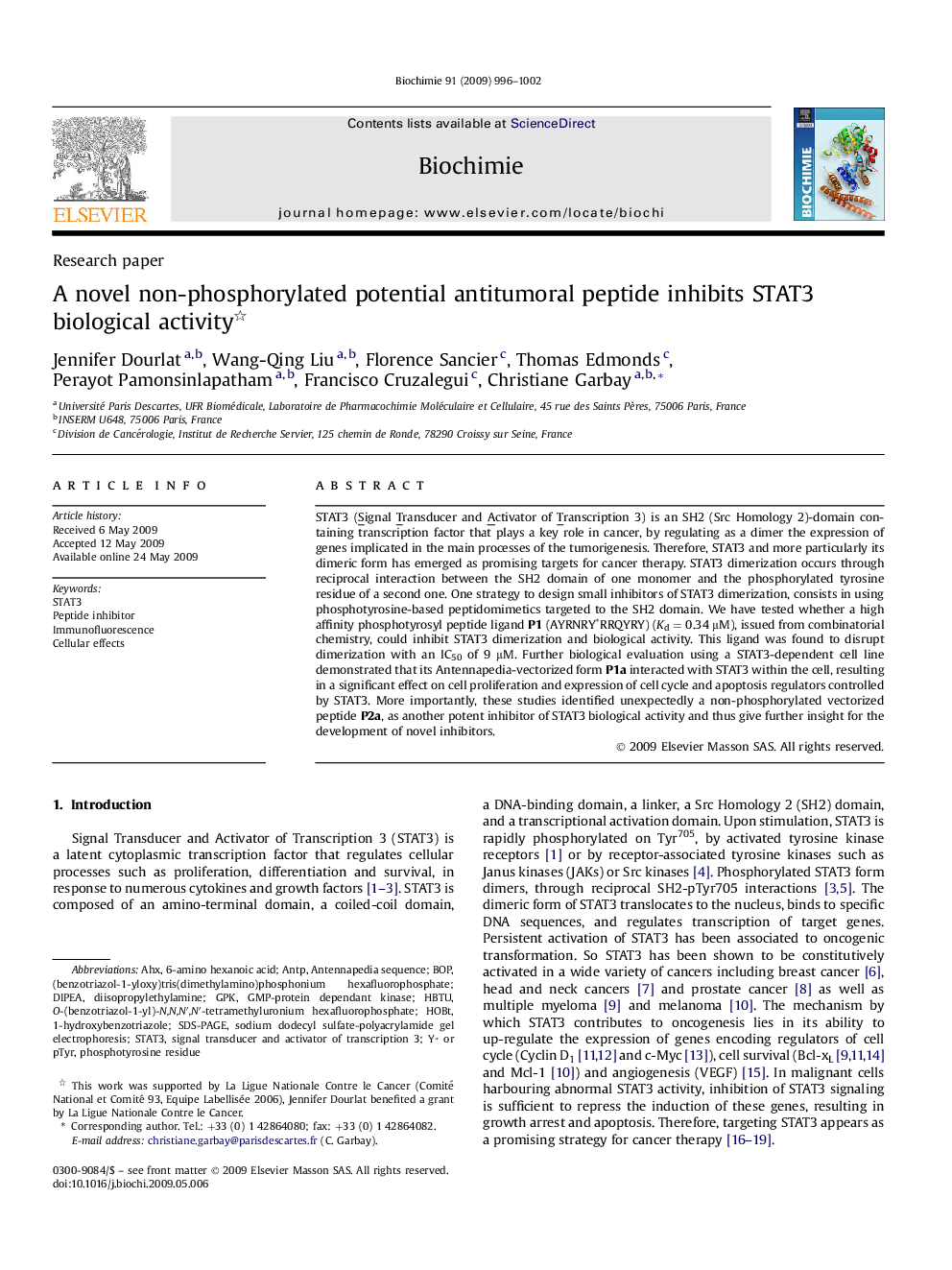| کد مقاله | کد نشریه | سال انتشار | مقاله انگلیسی | نسخه تمام متن |
|---|---|---|---|---|
| 1952840 | 1057234 | 2009 | 7 صفحه PDF | دانلود رایگان |
عنوان انگلیسی مقاله ISI
A novel non-phosphorylated potential antitumoral peptide inhibits STAT3 biological activity
دانلود مقاله + سفارش ترجمه
دانلود مقاله ISI انگلیسی
رایگان برای ایرانیان
کلمات کلیدی
STAT3O-(benzotriazol-1-yl)-N,N,N′,N′-tetramethyluronium hexafluorophosphate(benzotriazol-1-yloxy)tris(dimethylamino)phosphonium hexafluorophosphateHOBtHBTUBOP1-hydroxybenzotriazole - 1-هیدروکسی بنزوتریازولAhx - آهکسCellular effects - اثرات سلولیsodium dodecyl sulfate-polyacrylamide gel electrophoresis - الکتروفورز ژل دوده سولفات سدیم پلی آکریل آمیدSDS-PAGE - الکتروفورز ژل پلی آکریل آمیدImmunofluorescence - ایمونوفلورسانسdiisopropylethylamine - دی ایزوپروپیلایتیلامینsignal transducer and activator of transcription 3 - مبدل سیگنال و فعال کننده رونویسی 3Antp - مزهPeptide inhibitor - مهارکننده پپتیدDIPEA - نخود
موضوعات مرتبط
علوم زیستی و بیوفناوری
بیوشیمی، ژنتیک و زیست شناسی مولکولی
زیست شیمی
پیش نمایش صفحه اول مقاله

چکیده انگلیسی
STAT3 (Signal Transducer and Activator of Transcription 3) is an SH2 (Src Homology 2)-domain containing transcription factor that plays a key role in cancer, by regulating as a dimer the expression of genes implicated in the main processes of the tumorigenesis. Therefore, STAT3 and more particularly its dimeric form has emerged as promising targets for cancer therapy. STAT3 dimerization occurs through reciprocal interaction between the SH2 domain of one monomer and the phosphorylated tyrosine residue of a second one. One strategy to design small inhibitors of STAT3 dimerization, consists in using phosphotyrosine-based peptidomimetics targeted to the SH2 domain. We have tested whether a high affinity phosphotyrosyl peptide ligand P1 (AYRNRYâRRQYRY) (Kd = 0.34 μM), issued from combinatorial chemistry, could inhibit STAT3 dimerization and biological activity. This ligand was found to disrupt dimerization with an IC50 of 9 μM. Further biological evaluation using a STAT3-dependent cell line demonstrated that its Antennapedia-vectorized form P1a interacted with STAT3 within the cell, resulting in a significant effect on cell proliferation and expression of cell cycle and apoptosis regulators controlled by STAT3. More importantly, these studies identified unexpectedly a non-phosphorylated vectorized peptide P2a, as another potent inhibitor of STAT3 biological activity and thus give further insight for the development of novel inhibitors.
ناشر
Database: Elsevier - ScienceDirect (ساینس دایرکت)
Journal: Biochimie - Volume 91, Issue 8, August 2009, Pages 996-1002
Journal: Biochimie - Volume 91, Issue 8, August 2009, Pages 996-1002
نویسندگان
Jennifer Dourlat, Wang-Qing Liu, Florence Sancier, Thomas Edmonds, Perayot Pamonsinlapatham, Francisco Cruzalegui, Christiane Garbay,